The Great Blizzard Of 1978 On
Jan 19, 1978, the biggest snow to ever hit the state closed down the
entire East Coast. They called it "The Great Blizzard Of 78".
It was a rare snowstorm, in that more snow fell at Charleston
than at Pickens in the high mountains of Randolph County. The 16.4
inches of snow accumulation at Charleston fell on top of an old snow
cover of seven to eight inches. By early afternoon on the 20th, the
total snow depth at Charleston averaged 24 inches. This was the deepest
snow depth on record for the capital city.
As I left my hill, the car's front end was actually off the ground
and I was steering the car like a boat. You see, I had a VW Beetle,
which had a flat pan under the car, rear engine drive, and could go
almost anywhere. I
was the ONLY vehicle on the road early that morning. The interstate had
completely closed, so I fought my way into town on Rt 21. I
pulled up to the newspaper, and parked right in the middle of Virginia
Street because there was no traffic, and no way to park near the
curb due to the snow. The Editor asked me if I could make it up
airport hill..... oh great. |
 It
seems that the Daily Mail "ShowPlane" crowd was stuck at Kanawha
Airport. But how did they get there? After all, the airport
had shut down the night before. Here's the story:
Turns
out they couldn't make it to Charleston due to the storm, and had to
land in Pittsburgh, They were placed on buses and were on their way
home. However, due to stupid regulations, they weren't allowed to
get off downtown. So the buses attempted to climb airport hill in
the snowstorm. They got just over halfway up and became stuck.
Sometime in the early morning, with no food or water on the
buses, the people got out in the dark snowstorm and walked up the hill.
They arrived at the terminal only to find it closed and locked.
A guard or janitor let them in. Once again, there was no
food or drink other than water. These people called every person
they knew to open the restaurant or get them off the hill, but
that didn't happen because everyone was stuck just like they were.....
|
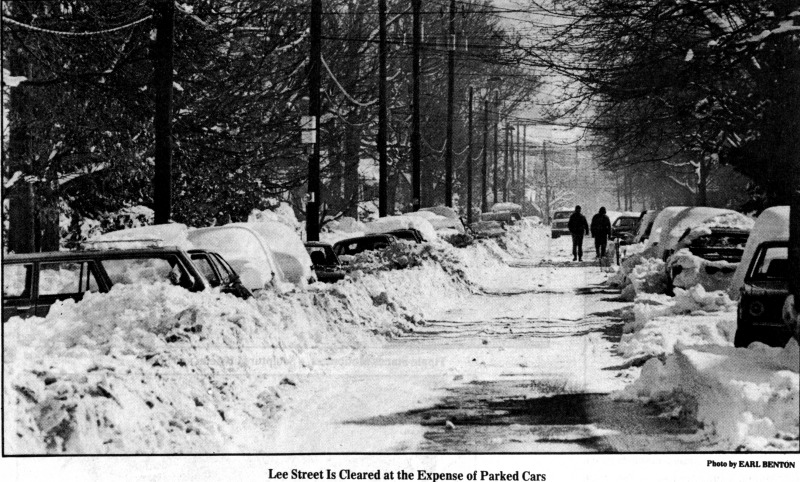 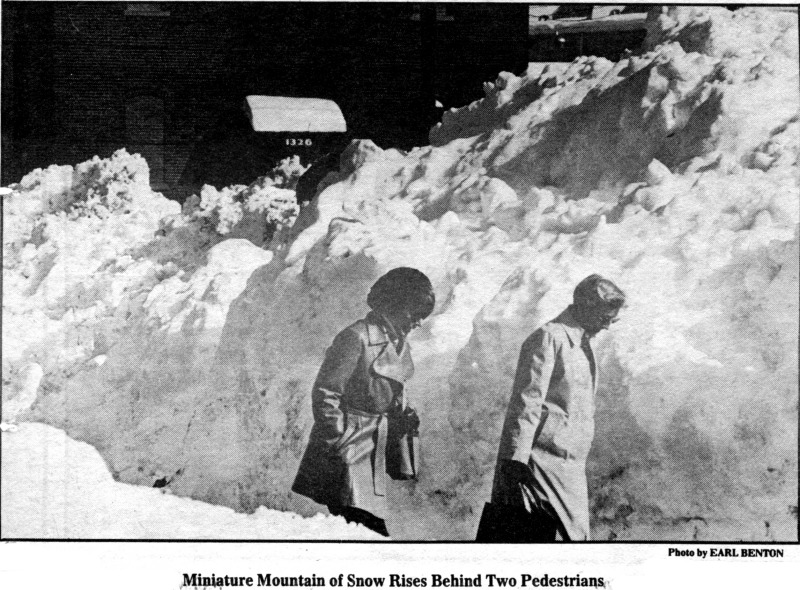
| My
mission was to drive to the airport and take photos. I somehow
managed to get over Green brier Street hill, but I knew that as
had as that was.... the worst was up ahead. I started up airport
hill, giving my little Beetle all she had. I barely made it past
the first bus because it had slid sideways, which placed me very close
to the ditch,. Not that it mattered, because the ditch was full of snow
and I had to guess where it was anyway. I struggled to get my
speed back up, all the while spinning and barely moving. But what
I saw ahead told me that I might end my mission right there:, for you
see the second bus was turned even sharper than the first..... |
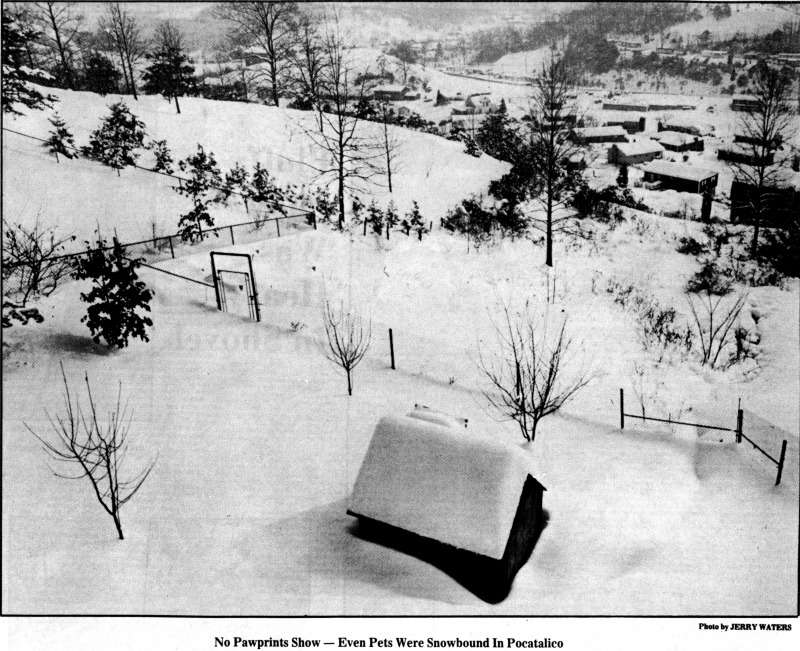
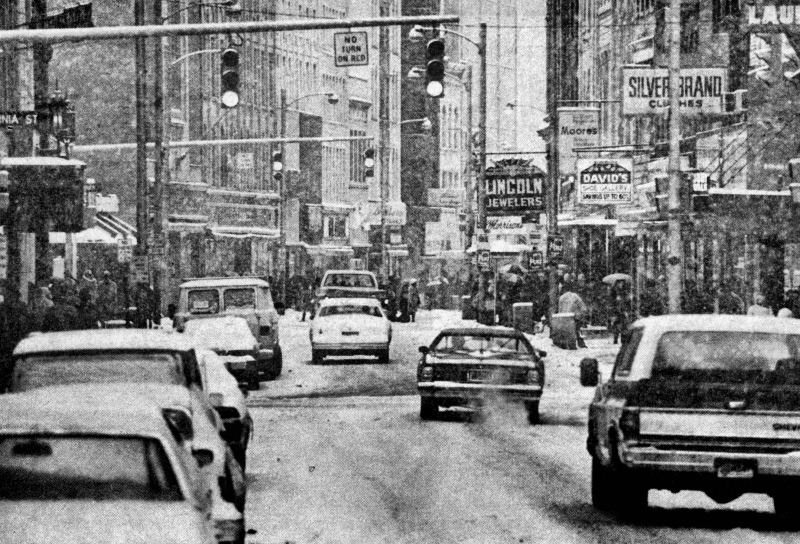
| As
I got closer in the dim light, I could see that the second bus
had turned almost sideways, but had done so right at the "General
Aviation" road. That meant that even though I didn't have enough
momentum to continue up the hill, I could back-up the General
Aviation road as far as possible, then sling-shot down it and hopefully
clear that last bus. This is exactly what happened. I
spun right on up that hill and finally made it to the terminal.
I went inside where people started crowding around me. They
told me what had happened and were tired, hungry, and wanted coffee in
the worst way. Some wanted to come off the hill with me, but I
told them that I had only one seat available in my little car but I
would be glad to take one person. In a show of solidarity, they
all decided to stick it out together and stay. As I was
going off the hill, I saw a farm tractor pulling one of the
buses up the hill. All of that because the bus drivers weren't
allowed to let the passengers off downtown. |
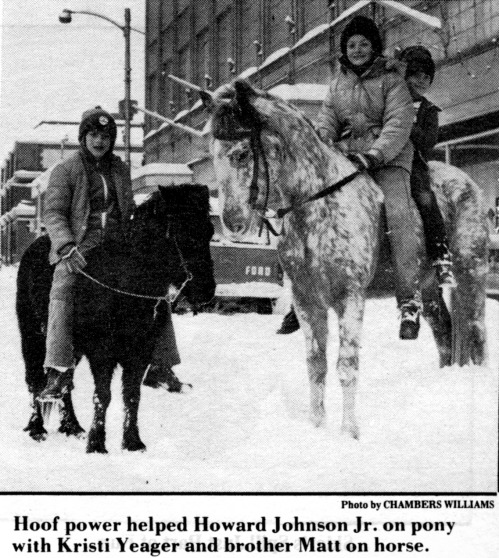
*Notice the Diamont Dept Store in the background*
NO ONE KNEW IT AT THE TIME, BUT FRANKENBERGERS WAS RIGHT ON THE MONEY ! 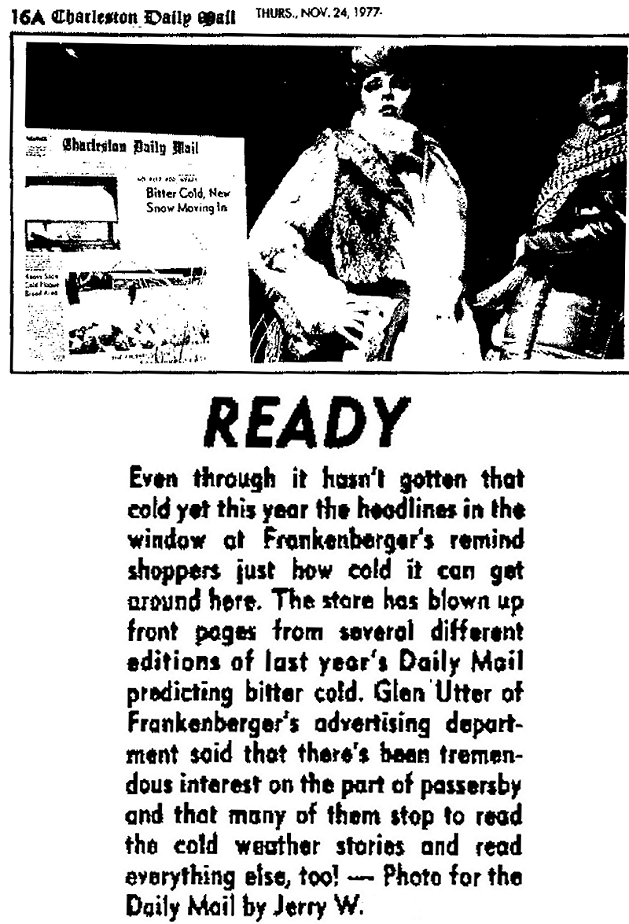
The
new year of 1978 saw a widespread snow of four to ten inches across
West Virginia on January 8th and 9th. During the second week of
January, temperatures in the single digits and below zero followed and
frequent lighter snows continued to fall into the third week of the
month. This kept a snow pack of five to ten inches on the ground across
the lowlands, with deeper amounts in the mountains.
On Thursday,
January 19, 1978, a low pressure storm system was developing in the
northeastern Gulf of Mexico near the Florida panhandle. Snow spread
rapidly north, reaching southern West Virginia during the morning
hours. Snow began falling across the northern counties during the early
afternoon hours, reaching the far Eastern Panhandle around dark that
evening.
The snow became heavier during the predawn hours of
Friday, January 20th, while most West Virginians were sleeping. At the
same time, the storm center was nearing the coast of North Carolina.
National Weather Service personnel at Charleston observed heavy snow
with visibility only a 16th of a mile at the airport.
It
was a rare snowstorm, in that more snow fell at Charleston than at
Pickens in the high mountains of Randolph County. The 16.4 inches of
snow accumulation at Charleston fell on top of an old snow cover of
seven to eight inches. By early afternoon on the 20th, the total snow
depth at Charleston averaged 24 inches. This was the deepest snow depth
on record for the capital city.
Many roofs and awnings
collapsed under the weight of the snow. Several buses became stranded
on the hill leading to Charleston’s airport. Cities were paralyzed.
Normal Friday activities were suspended.
The aftermath of the
storm increased its impact on state residents. A stronger storm hit
just a week later on the 26th and 27th, with barometers reaching record
low pressures. The new storm was a fatal blizzard in western Ohio,
Indiana and Michigan. However, in West Virginia the bulk of its
precipitation fell as rain. The rain and high winds caused rapid
snow melt. Many rivers went into flood. The most serious flooding was
along the Little Kanawha and Tug Fork Rivers. After the storm abated,
flood waters remained as temperatures plummeted back into the single
digits and teens. Despite the rain, January 1978 was the snowiest month
on record for both Huntington and Charleston. Charleston measured 39.5
inches of snow, while Huntington saw 30.3 inches.
All of the
snow cover was not washed away. February 1978 was extremely cold. As a
result, a solid snow cover remained on the ground into early March. This
period became the longest known continuous snow cover for most towns in
West Virginia. Depending on location, the snow pack was on the ground
for 60 to 65 consecutive days.
The Storm of the Century:
The
Great Blizzard of 1978, also known as the White Hurricane, was a
historic winter storm that struck the Ohio Valley and Great Lakes from
Wednesday, January 25 through Friday, January 27, 1978. The 956.0 mb
barometric pressure measurement recorded in Mount Clemens, Michigan was
the lowest in the history of the Central United States. The storm
that embraced Ohio and WV was the most powerful ever known in the
states.
The storm initially began as rain but quickly changed
over to heavy snow during the pre-dawn hours (as arctic air deepened
ahead of the storm) leading to frequent whiteouts and zero visibility
during the day on Thursday, January 26. As the storm headed for Ohio,
this resulted in a "storm of unprecedented magnitude", according to the
National Weather Service, which categorized it as a rare severe
blizzard, the most severe grade of winter storm. Temperatures fell to
near zero with the arrival of the arctic air and remained near 10
degrees all day. The death toll rose as motorists were stranded and
home heating failed.
Winds gusting up to 100 miles per
hour caused drifts that nearly buried some homes. Wind chill
values reached −60 °F The blizzard was the worst in Ohio history
where 51 people died as a result of the storm. Over 5000 members of the
Ohio National Guard were called in to make numerous rescues. Police
asked citizens who had four-wheel-drive vehicles or snowmobiles to
transport doctors to the hospital. From January 26 to 27, the entire
Ohio Turnpike was shut down for the first time ever. The total effect
on transportation in Ohio was described by Major General James C. Clem
of the Ohio National Guard as comparable to a nuclear attack.
An inch or more, usually much more, of snow would remain on much of that area for nearly two months straight. |

Back To Seventies Index
|



